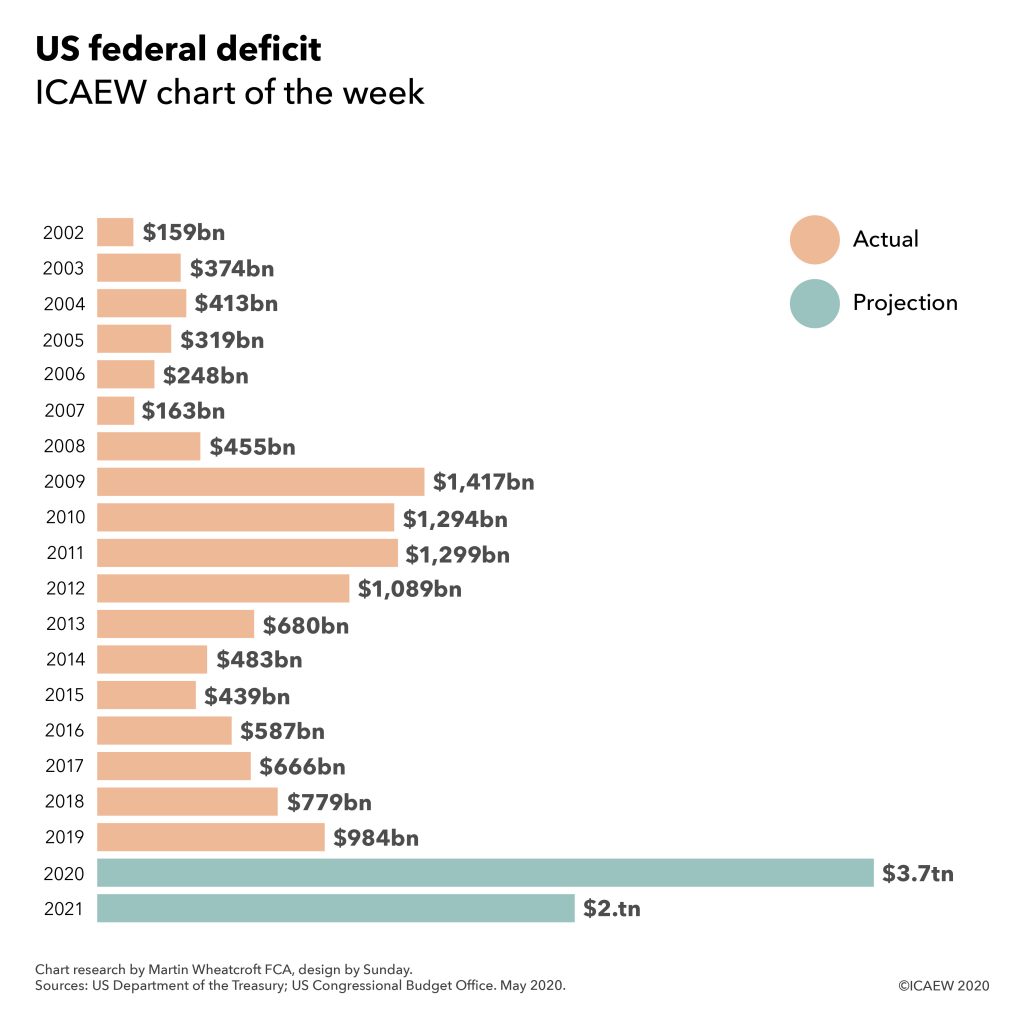8 May 2020: Public finances around the world are being severely affected by the coronavirus pandemic, with the United States being no exception.

The US Congressional Budget Office had already forecast that the federal deficit would exceed $1tn this year, but on 24 April 2020, it updated its predictions to suggest that the US federal deficit could reach $3.7tn or 18% of GDP in 2020. It is also predicting a deficit of $2.1tn or 10% of GDP in 2021.
These are substantially larger than the deficits experienced a decade ago during the financial crisis, reflecting a combination of a massive shock to the US economy and a series of large scale fiscal interventions on an unprecedented scale.
The CBO prediction is heavily caveated given the prospect of further fiscal interventions and the potential for a second wave of infection in the fall, so watch this space for further developments in the increasingly topical subject of accounting for governments.